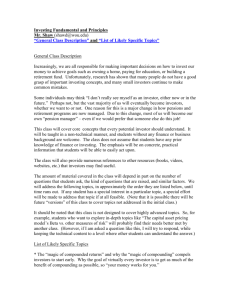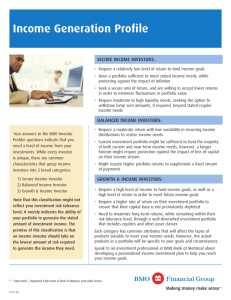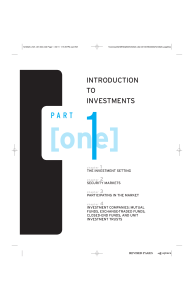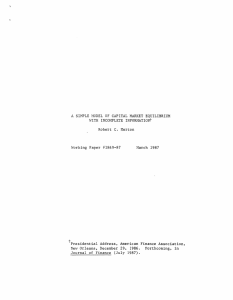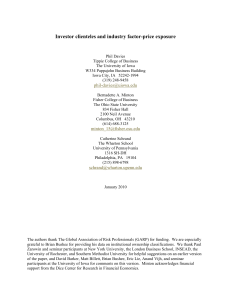Mutual fund
advertisement
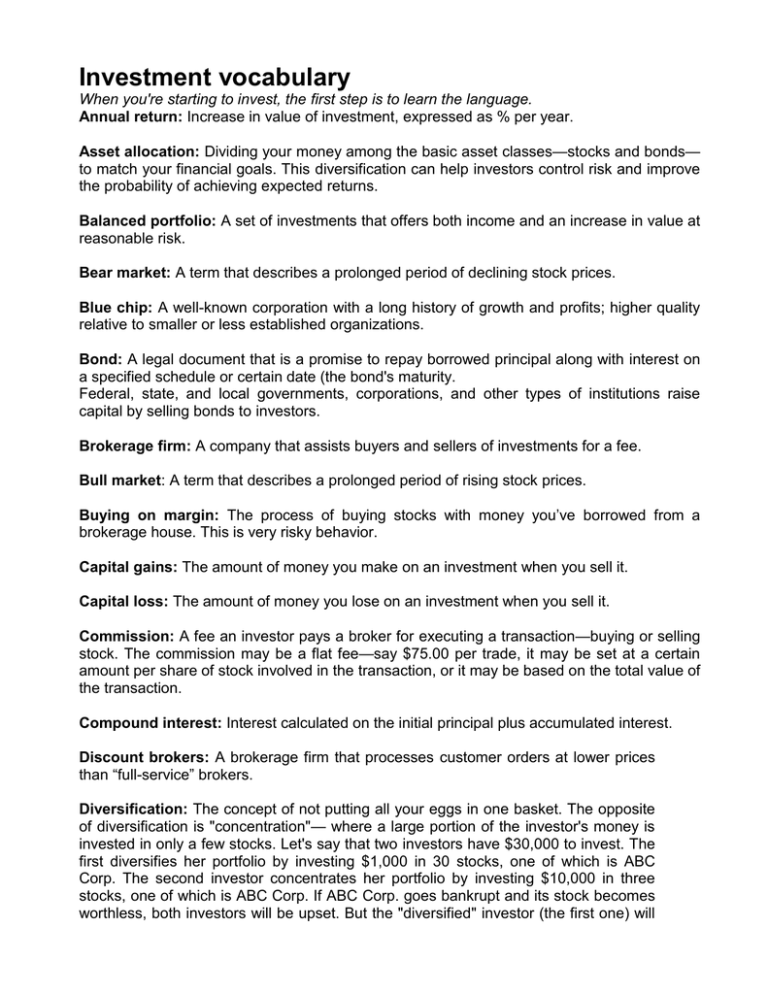
Investment vocabulary When you're starting to invest, the first step is to learn the language. Annual return: Increase in value of investment, expressed as % per year. Asset allocation: Dividing your money among the basic asset classes—stocks and bonds— to match your financial goals. This diversification can help investors control risk and improve the probability of achieving expected returns. Balanced portfolio: A set of investments that offers both income and an increase in value at reasonable risk. Bear market: A term that describes a prolonged period of declining stock prices. Blue chip: A well-known corporation with a long history of growth and profits; higher quality relative to smaller or less established organizations. Bond: A legal document that is a promise to repay borrowed principal along with interest on a specified schedule or certain date (the bond's maturity. Federal, state, and local governments, corporations, and other types of institutions raise capital by selling bonds to investors. Brokerage firm: A company that assists buyers and sellers of investments for a fee. Bull market: A term that describes a prolonged period of rising stock prices. Buying on margin: The process of buying stocks with money you’ve borrowed from a brokerage house. This is very risky behavior. Capital gains: The amount of money you make on an investment when you sell it. Capital loss: The amount of money you lose on an investment when you sell it. Commission: A fee an investor pays a broker for executing a transaction—buying or selling stock. The commission may be a flat fee—say $75.00 per trade, it may be set at a certain amount per share of stock involved in the transaction, or it may be based on the total value of the transaction. Compound interest: Interest calculated on the initial principal plus accumulated interest. Discount brokers: A brokerage firm that processes customer orders at lower prices than “full-service” brokers. Diversification: The concept of not putting all your eggs in one basket. The opposite of diversification is "concentration"— where a large portion of the investor's money is invested in only a few stocks. Let's say that two investors have $30,000 to invest. The first diversifies her portfolio by investing $1,000 in 30 stocks, one of which is ABC Corp. The second investor concentrates her portfolio by investing $10,000 in three stocks, one of which is ABC Corp. If ABC Corp. goes bankrupt and its stock becomes worthless, both investors will be upset. But the "diversified" investor (the first one) will only lose $1,000 while the "concentrated" investor will lose $10,000. Dividend yield: The annual rate of return earned by a stockholder. To find a corporation's dividend yield, divide the annual dividend by the current market price of a share of the corporation's stock. For example, if X Corporation pays an annual dividend of $2.00 and its stock is trading at $32.00 per share, its dividend yield is 2.00/32.00, or 6.25%. Dividends: Cash or stock payment to stockholders from a company’s profit. Dollar-cost averaging: Investing the same amount of money on a regular schedule (for example, $50 a month), regardless of market price. This is a strategy that helps reduce market volatility. It can reduce your average share costs because you acquire fewer shares when prices are higher and more shares when prices are lower. Full-service brokers: Brokerage firms that offer a wide range of services to clients. Such services may include research materials and advice on what stocks, bonds, and/or mutual funds to buy and sell. A full-service broker's commissions and other account fees will generally be higher than the commissions and fees a discount broker charges. Invest: Use money to make more money. Liquidity: How fast investments can be bought and sold. Maturity: Time when a bond issuer pays you back the money you loaned plus any interest earned. Mutual fund: A kind of investment that a company makes on behalf of shareholders. The company sells shares in the fund and invests the money in a group of assets, usually securities. The fund's managers make investment decisions according to stated objectives. NASDAQ: The first electronic stock market, created in 1971. It lists nearly 4,000 companies that do business in technology, biotechnology, communication, retail, financial services, media, transportation, and other industries. Unlike New York Stock Exchange (NYSE) and American Stock Exchange, NASDAQ does not have a physical trading floor. Trades are completed through a computer and telecommunications network. New York Stock Exchange (NYSE): The US's oldest and largest stock exchange, or place where securities are traded. Formed in 1792, the NYSE sets policies, supervises member activities, lists securities, and evaluates applicants. This exchange uses the "open outcry" system of trading where representatives of buyers and sellers meet on the large trading floor and shout prices and use hand signals to communicate and reach a deal. More than 1.3 billion shares worth more than $42 billion trade on an average day at the NYSE. See also American Stock Exchange and NASDAQ. Portfolio: Consists of all the assets you own and represents the choices you've made with your money. Price-to-earnings (P/E) ratio: A tool investors use to evaluate companies. It’s calculated by taking the price of one share of a company’s stock and dividing it by the company’s earnings per share over a 12-month period. Prospectus: A legal document with information about a mutual fund or other types of investments. It describes the investment's objective, management style, performance over the past 10 years, background of its officers, and expenses. Rebalancing: Periodically revising your portfolio's asset allocation to make sure it still supports your investment plan. Return: The increase in value of an investment over time such as the amount received when stock sold or bond redeemed. Risk tolerance: Every investor has the ability to tolerate a certain amount of change in his or her portfolio's value, including short-term losses from market declines. Younger investors can usually tolerate more risk because they have ample time to recover from these short-term losses. That's not the case for older investors. Conservative investors simply don't want to experience any declines. More aggressive investors tolerate losses well because they're confident that they will recover before they're required to sell their investments. Where an investor falls on the spectrum between aggressive and conservative is called an investor's risk tolerance. Stock exchange: An organization that operates a marketplace for the buying and selling of stock. Examples in the US include the New York Stock Exchange and NASDAQ. Stock market: The system for buying and selling units of ownership (called shares or stock) in a corporation or mutual fund. Time horizon: The length of time before you must sell investments to raise cash to meet your spending needs. Some time horizons are short, like investing for a vacation next year. Others are long, like investing for retirement. An investor with a long time horizon usually can take more risk, and vice versa. When you calculate your retirement investment time horizon, don't make the mistake of ending it on the day you expect to retire. At that point as much as one-third of your life still may lie ahead of you. Your spending needs will not stop on your retirement date!




